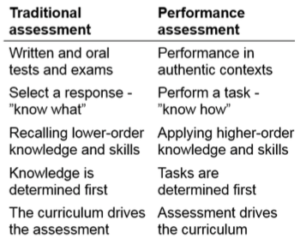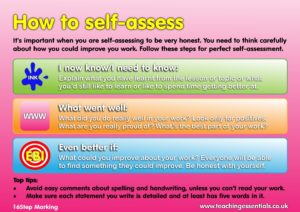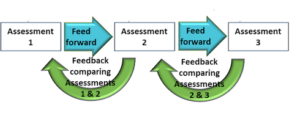LoopMe
 What it is: LoopMe is a formative e-assessment tool consisting of a digital and mobile communication platform that allows for simple and relevant one-to-one dialogues between teachers and learners. The teacher defines mandatory action-oriented tasks that learners perform and then reflect upon.
What it is: LoopMe is a formative e-assessment tool consisting of a digital and mobile communication platform that allows for simple and relevant one-to-one dialogues between teachers and learners. The teacher defines mandatory action-oriented tasks that learners perform and then reflect upon.
How it works: Teachers can use LoopMe to design an action-based learning experience by breaking it down into manageable tasks. This clarifies goals and prompts learners to take action and reflect upon each action. Each task that learners are required to do is specified in the LoopMe. Tasks are constructed by employing constructive alignment principles1, i.e. by letting learners do those tasks they need to do in order to learn what teachers want them to learn. Once the tasks are distributed to all learners and they are instructed to get started doing them, the progress for the entire cohort of learners can be followed in real-time.
Benefits: Through the real-time feedback from student reflections on each completed task, teachers get an overview of how their teaching works in practice. Students getting stuck can be identified through their negative reflections on tasks, and be given support. Teachers can also use information from students for fact based discussions among colleagues on how their teaching works. For students LoopMe represents an appreciated digital channel for feedback to and from their teachers and for sensitive discussions with their teachers when necessary. LoopMe thus leads to a better relationship between teachers and students without causing information overload for the teacher.
Challenges: One challenge is that LoopMe requires each student to have access to a smartphone or computer in the learning environment. Being a new kind of assessment tool, it also requires teacher training in order to get started. It is furthermore difficult for teachers used to more traditional pedagogy to design action-oriented and authentic tasks that are appropriate for social learning.
Relevance for entrepreneurial teaching: LoopMe was built as part of a research program on entrepreneurial education. The tool is therefore designed specifically to support entrepreneurial teaching, such as experiential and action-oriented assignments. On the website www.LoopMe.io there are a number of ready-made task packages tailored for use in entrepreneurial education.
Applied assessment methods: LoopMe is an example of an e-assessment tool that emphasizes feedback assessment. It is also based on performance assessment through its reliance on authentic tasks to perform, and on reflective assessment through the mandatory reflections on completed tasks. Other theoretical foundations of LoopMe include experience sampling and learning analytics.
Examples from practice: LoopMe has been used on all levels of education since 2014. In the Erasmus Plus project ‘ELAN – Entrepreneuria Learning Assessment Network’ LoopMe was used to facilitate entrepreneurial education in lower secondary schools in Sweden, Norway and Turkey. Teachers found LoopMe to be useful for formative assessment and dialogue around critical learning events triggered by entrepreneurial pedagogy. Another example is from higher education, where a teacher professional development course at Linnaeus University, where 80 teachers were assigned action-oriented tasks requiring them to apply novel pedagogical theories in their own classrooms.
 Definition: Let students perform meaningful and hands-on real-life tasks and assess them based on their task accomplishment1.
Definition: Let students perform meaningful and hands-on real-life tasks and assess them based on their task accomplishment1.
 Definition: An ipsative assessment compares a learner’s current performance with previous performance either in the same field through time or in comparison with other fields, resulting in a descriptor expressed in terms of their ‘personal best’.1
Definition: An ipsative assessment compares a learner’s current performance with previous performance either in the same field through time or in comparison with other fields, resulting in a descriptor expressed in terms of their ‘personal best’.1